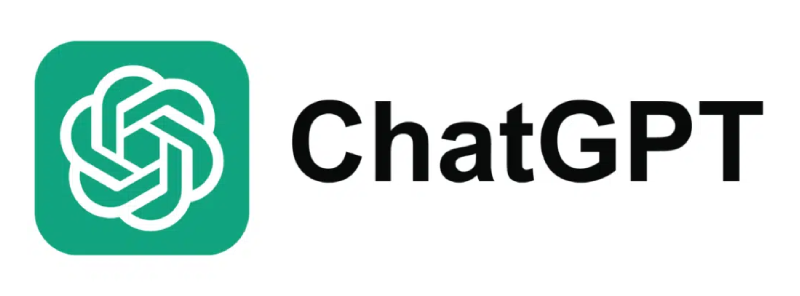Key takeaways
- Duress = forced signature under threat or unfair pressure
- Not all pressure qualifies, proof is everything
- Delayed action can hurt your case
- Businesses should build contracts with transparency and review time
- Tools like Docupilot help reduce risk with audit trails, consent clauses, and clean workflows
You didn’t say “yes.” You said, “fine, I’ll sign.” But was that really a choice, or a threat in disguise?
It can be a non-disclosure agreement delivered with an ultimatum, a divorce settlement signed under emotional exhaustion, or a contract you barely understood, but feared the fallout of saying no.
Every day, people are cornered into agreements, not with confidence, but with clenched teeth. A threat, a ticking clock, or a choice made in fear instead of freedom. That is not consent. It's a duress. And yes, it could make a contract legally void.
In this post, we break it down: what qualifies as signing a contract under duress, how to prove it in court, and how to protect both sides from costly legal fallout.
What is signing under duress?

“Signing under duress” means you signed a contract against your will because someone forced or unfairly pressured you. In other words, your assent wasn’t free, there was coercion. Under contract law, free consent is essential. A court will invalidate a contract if one party proves they were compelled by wrongful threats or pressure to sign.
What qualifies as legal duress?
For a court to accept a duress claim, the pressure must be extreme enough to override your ability to choose freely. For example:
- Threats of harm: This includes physical threats (“Sign this or I’ll hurt you”) or financial threats (“Sign or I’ll ruin your business”)
- Blackmail: Using secrets, legal threats, or personal leverage to force someone into agreement (“Sign, or I’ll expose you”)
- Abuse of power: When someone in a position of authority, like an employer, caregiver, or lawyer, uses that position to pressure you into signing because they know you can’t easily say no
- Unfair time pressure: Being told to “sign now or lose everything,” without time to think, ask questions, or get legal advice, especially in high-stakes deals like job offers or settlements
Why consent matters in contracts
Every valid contract depends on mutual consent. That means:
- Both parties clearly understand what they’re agreeing to
- Nobody is tricked, rushed, or forced
- There’s time to review the terms and seek legal input if needed
Duress, undue influence, and manipulation: What’s the difference?
These terms are related but in legal terms, they mean very different things.
Here’s a simple breakdown:
Common misconceptions
- "I felt rushed" ≠ Duress
Feeling hurried isn’t illegal unless paired with threats or no chance to review.
- "I regret signing" ≠ Duress
Buyer’s remorse or a bad deal isn’t the same as coercion.
- "They were pushy" ≠ Undue influence
Aggressive sales tactics aren’t unlawful unless they exploit a special relationship (e.g., doctor-patient).
- "They lied to me" → Possibly fraud, not duress
If someone tricked you into signing, that’s a different legal claim.
“Is this duress?” Real-world scenarios

Assessing duress is a nuanced process that depends on contextual details. Here are a few signed under duress examples:
- "Sign or you’re fired" (Workplace pressure)
Employers often hold this over employees, but a mere job ultimatum is typically a lawful act, not automatically duress. If the threat is simply “lose your job,” that falls within the employer’s rights, as long as they adhere to the terms of the employment contract and applicable labor laws. It might become duress if the manner or context is illegal (e.g. threatening to plant false evidence).
- "I’ll take the kids if you don’t sign" (Divorce/custody threats)
While filing for custody is a legal right, threats involving children or personal safety go beyond legitimate legal pressure and can invalidate agreements. Remember, duress occurs only when threats are illegitimate in nature).
- "You’ll be deported if you don’t agree" (Immigration threats)
If someone withholds a signature by threatening deportation or legal trouble (when they have no right to do so), courts generally see that as duress.
- "Limited-time offer—sign now or lose it!" (High-pressure sales)
High-pressure sales tactics can feel coercive, but on their own they do not satisfy duress. Yes, hard sells and tight deadlines are unsavory, but aggressive negotiation is legal as long as it doesn’t involve illegal threats.
- "We didn’t tell you the fine print" (Withholding key information)
Discovering after the fact that “the fine print” was never explained is frustrating, but that’s typically misrepresentation or nondisclosure, not duress. If a signer lies about the terms (fraud) or omits key facts, the remedy is rescission for fraud, not duress.
How to prove you signed under duress
If you believe you were forced into signing a document, the next step is critical: proving it.
What courts look for
To assess a duress claim, courts ask:
- Was there a threat or wrongful pressure?
- Did you feel you had no safe alternative but to sign?
- Was the decision made under fear, isolation, or extreme urgency?
- Did the person benefit fairly, or was the deal clearly one-sided?
Evidence that holds up in court
- Text messages and emails that show threats, pressure, or unrealistic timelines
- Call logs or audio recordings that reflect coercion
- Witness statements from anyone present during the signing
- Screenshots, photos, or documents showing misleading terms or bait-and-switch tactics
- Medical or psychological records if mental state was compromised
When the burden of proof shifts
Normally, the person claiming duress (the victim) must prove it. However, in some situations, the court may shift the burden to the other party, especially if:
- You had mental health issues or cognitive impairment
- There was a major power imbalance
- You belonged to a vulnerable group (like a minor, elder, or dependent)
In these cases, the other side may have to prove the contract was signed freely.
Red flags courts take seriously
Certain conditions may support a duress claim and help prove coercion, like:
- You were under severe emotional or psychological stress
- You were denied time to review or get legal help
- The terms were hidden or intentionally confusing
- You were pushed to sign at the last minute, with no room to back out
What happens if the court finds duress?
If a court agrees you signed under duress, the contract is voidable. Remedies may include:
- Rescission: The contract is canceled, and parties are returned to their pre-contract positions. In practice, you no longer have to perform obligations, and any exchanged benefits must be returned (restitution)
- Damages: The wronged party may recover losses caused by the duress. If you suffered harm (e.g. paid out money under duress), courts can order the other side to give it back
- Injunctions: A court may bar enforcement of the agreement or specific terms if ongoing duress is at issue.
- Reformation: In some cases, instead of voiding the entire deal, a court may revise the contract to remove the coerced terms or make it fair
When courts don’t step in
Not every unhappy signature can be undone. Courts generally won’t cancel an agreement if:
- You felt rushed but still had time and options
- The pressure was part of hard negotiation, not a threat
- You didn’t read the document, even though you had the opportunity
- You benefited from the deal and only objected later
Acting on duress: can you walk away?

In many cases, you can still challenge a contract signed under duress, but:
There are time limits
Every state (and country) has a deadline for filing a duress claim. It depends on the type of agreement:
- Written contracts: 3 to 6 years in most regions
- Verbal agreements: Usually shorter (2 to 4 years)
- Fraud or coercion cases: Sometimes extended, but only if you act soon after realizing the issue
What happens if you keep going after signing?
Courts observe what you did after signing. If you:
- Continued with the deal
- Accepted payment or benefits
- Failed to object for a long time
…it could weaken your case because it suggests you agreed to the terms.
Why delay can hurt your case
The longer you wait to act, the harder it gets to prove duress. This is because evidence fades, witnesses often forget, and moreover, your silence can be seen as consent.
How to prevent duress claims in your own business
One bad signature can lead to expensive disputes. Whether you're managing employees, clients, or vendors, it’s your job to make sure every agreement is clear, fair, and 100% voluntary.
5 Best practices for preventing duress disputes

1. Use clear, simple language
90% of professionals find contracts difficult to understand, and 84% feel pressure to simplify them. Avoid legalese and highlight key terms in plain English. If an agreement is easy to read, it’s harder for anyone to claim they were deceived or pressured by hidden language.
2. Allow adequate review time
Never force an immediate signature. Instruct signers to take a day or two, ask questions, or get counsel. For example: “Please review this document for 48 hours and consult your attorney if you wish.”
3. Highlight important clauses
Don’t bury penalties, renewal terms, or waivers deep in small print. Summarize unusual or critical terms in a “Key Points” section up front.
4. Add consent checkboxes
In e-contracts, use checkbox affirmations for major provisions.
Example:
Before the signature box, add:
☐ I understand the arbitration clause
☐ I’m signing voluntarily
5. Include video or verbal affirmations
In high-stakes or sensitive agreements, a short recorded confirmation can add an extra layer of legal protection. For example, record a short video call where the signee says: “Yes, I’ve read the contract and I’m signing it voluntarily.”
Platforms like Docupilot make it easy to implement these safeguards. It uses clear templates, audit trails, checkbox fields, and signer timestamps that create a defensible, transparent signing experience.
How Docupilot protects you against duress disputes
Docupilot helps you prove that a document was signed freely. In case a dispute arises, this tool ensures you are already prepared.
Here’s how:
1. Digital signatures with audit trails
Every e-signature on Docupilot comes with a clear record (email trail, meeting minutes, call logs) showing that each party had a fair chance to negotiate and was not ambushed. This includes:
- Timestamps of when the document was opened, reviewed, and signed
- The signer’s IP address and device information
- Recorded user actions, like checkboxes ticked or sections scrolled
2. Optional clauses for consent and disclaimers
With Docupilot, you can include custom checkboxes or clauses like:
- “I’ve read and understood this agreement”
- “I’m signing of my own free will”
These simple checks strengthen your legal position later.
3. Instructions or info sections before signing
You can easily insert instruction boxes or an explainer text right above the signature block to:
- Summarize key terms
- Remind users to review carefully (Example: “Please review the termination clause in Section 4 before proceeding”)
4. Built-in transparency = better compliance
Docupilot’s standardized workflows make the signing process consistent and defensible. Here’s how transparency improves contract compliance:
- Sends the same version of the document to every signer, with equal time to review the terms
- Reduces the risk of informal agreements or misunderstandings that could lead to disputes
- Creates a verifiable record of how the contract was shared, reviewed, and accepted, thus strengthening your legal position if challenged
5. Easier legal review and dispute handling
If a dispute occurs later, Docupilot makes your legal team’s job easier by:
- Exporting full signature logs and metadata
- Showing exactly what the signer saw and did
- Backing up your position with traceable, time-stamped documentation
Clarity now means less conflict later
Signing under duress strips away choice. Whether you’re the one sending the document or signing it, consent must be clear, voluntary, and well-documented.
Duress claims can get messy – but with the right safeguards and the right tools, you can prevent most of them before they can occur. Docupilot helps you create contracts that are easy to sign, hard to challenge, and backed by a verifiable trail of consent.
Book a quick demo to see how Docupilot can help you build contracts that are easier to sign, harder to dispute, and built on trust.


















